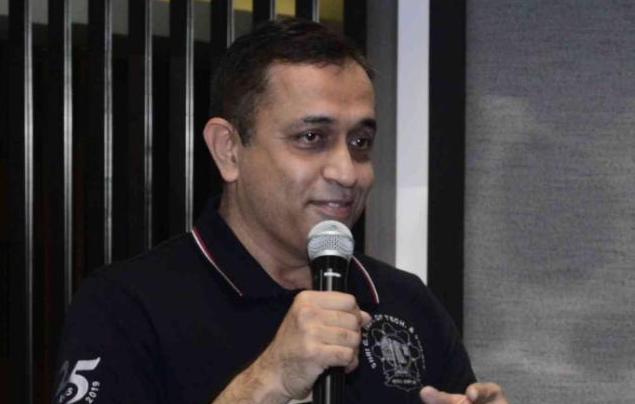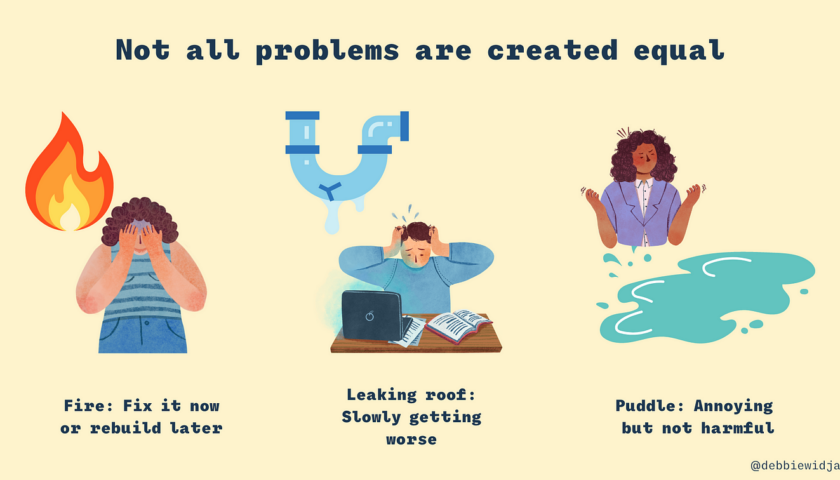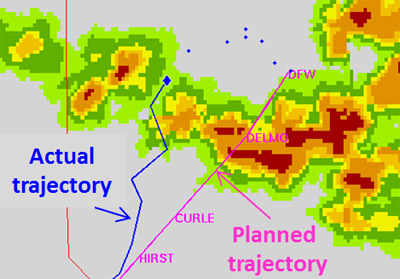A flight test engineer (FTE) is an engineer involved in the flight testing of prototype aircraft or aircraft systems. He/She has overall responsibility for the planning of a specific flight test phase, which includes preparing the test plans in conjunction with other analytical and/or systems engineers, overseeing the buildup of the aircraft to the proper configuration, working with the flight test instrumentation engineer to ensure the sensors and recording systems are installed for required data parameters, and preparing the manoeuvre-by-manoeuvre plan for each test flight (enshrined typically in a higher-level document called a “test plan” and then an operational document usually called the “test cards”). The FTE and the experimental test pilot are jointly responsible for the safety of the test flying. The FTE is also responsible for the overall analysis of the data acquired during a test flight. Finally, the flight test engineer will coordinate with specific analysis and/or systems engineers to write the final flight test report, documenting the results of a specific flight test phase.
The FTE may or may not fly onboard the test aircraft, depending on the aircraft type or mission objectives. When not in the test aircraft, the FTE normally monitors the test in real-time via data transmitted to a special flight test data centre. In this case, the FTE will be in radio contact with the test pilot along with the ground-based team, providing safety of flight monitoring and real-time data analysis. A brief introduction would have given you a fair idea as to the importance of FTE in a design, development and testing phase of a new aircraft. In this post, we will meet Gp Capt Himanshu Upadhyay (Retd), FTE who was involved in flight testing of Light Combat Aircraft “Tejas”.
- What motivated you to join Indian Air Force (IAF) after completing B Tech?
My uncle was in the AMC and as kids, we had a chance to visit some Army bases during our summer vacations. The military lifestyle, professional attitude, physical fitness and the glamour surrounding it all prompted me to join IAF.
- Tell our readers about your initial training in IAF?
I had done B.E. in Electronics and Telecommunication from SGSITS, Indore. From being an engineer I was groomed to be an officer, leader and aeronautical engineer at Air Force Technical College. The course duration was for 18 months. The college has a huge responsibility to educate and train engineers from various disciplines on the current technologies of aircraft, weapon and support system held by Indian Air Force and also to instil qualities of military leadership and managerial skills for members of the officer cadre of the Indian Air Force. The college in addition to training engineers of Indian Air Force and its sister services has also trained officers of DRDO, HAL, Air India and many personnel from friendly countries in South East Asia and the Middle East.
- You were Technical officer of MiG 21 Squadron for 7 years. What was your impression about the aircraft which was on its last leg of operational life?
I joined IAF in 1994, and my initial postings were at MiG 21 squadrons. I had the opportunity to work in all MiG 21 variants in different capacities towards ensuring that the aircraft operational preparedness. Our team of engineers and technicians met all the requirements while ensuring prompt first and second-line maintenance. I retired in 2020 after around 26 years with IAF from the post of Chief Engineering Officer of a frontline MiG 21 fighter base. I can say with confidence that the aircraft has been one of the most rugged mean machines. It requires no testimony as the aircraft has been operational and continued to be employed and exploited beyond 45 years towards mission requirements. No doubt, there was an increase in maintenance activity to ensure continued airworthiness, but the maintenance staff has been always alert in their procedures to prevent any failures.

- What motivated you to become FTE? Tell our readers something about ASTE and IAF Test Pilot School located at HAL Bangalore.
Having served 3 continuous tenures in MiG-21, I thought of upgrading my technical skills and appeared for the internal IAF M. Tech competitive exams. One smart youngster advised me to appear for TPS exam also, as the syllabus for both was common except with some emphasis on aerodynamics /avionics. I appeared for both and cleared both exams: One for Test Pilot School at Bangalore and second for M.Tech at IIT Kharagpur- RF and Microwave Engg. Before I could make up my mind, Air HQ detailed me for course at TPS. I was advised that ASTE gives a fantastic exposure to modern aerospace activities, interactions with designers and industry and the institution happen to be in Bangalore where I can feel the pulse of a metropolitan city. I never looked back since then. IAF TPS is only five of its kind in the world which trains to produce experimental/production test pilots and flight test engineers for both fixed and rotary wing. The one-year training is gruelling and aims to produce a test crew who is armed with the requisite knowledge and skills to take on testing of any airborne system/aircraft for effective operational utilization by the user (civil/military). Having passed out of IAF TPS, vide variety of trials await a test crew: right from instrumentation of aircraft for real-time display of aircraft parameters or onboard recording to undertaking performance analysis of the aircraft or avionics/armament evaluation. The scope is quite vast and test crew is involved in end to end evaluation and integration from design, rig testing to operationalization.
- What different type of courses is offered by the school for an engineer and what are the basic education and experience required to be a Flight Test Crew?
For an engineer, the school currently offers courses on both fixed-wing and rotary-wing aircraft for avionics/instrumentation and mechanical streams. During our times, the basic educational qualification requirements were BE with first-class and experience of more than six years in aircraft stream. However, the current requirements of background, experience and gender have been relaxed and details are available in the relevant Air Force Order. I understand that women have also been selected this year to undergo the course.
- This is a voluntary course unlike other courses in the military where you are detailed based on your performance. Why is it voluntary and what kind of entrance exam are you subjected to. What are the criteria for selection?
The course is voluntary as it not only requires willful participation of individuals to give their best but also to make sure that the individual understands the higher job demands and risks associated and willfully consents to it. The entrance exam is pitched at GATE level with the requirement of added knowledge of aerodynamics/ avionics and current trends in the military aviation. The individual’s ability to grasp the concepts and present the analysis/write report is also adjudged followed by an interview by the panel to assess suitability. The capability to understand basic flight manoeuvres, reading and interpreting the flight instruments with respect to the actual aircraft flight profile is also judged. Last but not the least, the individual’s medical fitness has to be of an exceptional order.
- Everyone knows that this is the toughest course in aviation. Tell our readers, why is it one of the toughest course and what makes it so difficult?
The selection and conduct of course is tough as, after passing out the individuals are expected to independently handle and manage costly defence assets and aircraft programs within a tight time schedule with no room for flight safety errors or danger to pilot life. Thus, after passing out, flight test plans for the trials are planned after having carefully analysed the design, conduct of rig and ground testing, analysis of failure modes, risk evaluation and determination of the scope.
“The more effort I put into testing the product conceptually at the start of the process, the less I effort I had to put into manually testing the product at the end because less bugs would emerge as a result.”
Trish Khoo
- What is the importance of instrumentation system for flight testing?
In any prototype aircraft programme, there is a large number of flight tests which need to be conducted with risks of various orders. The instrumentation system with its sensors, data acquisition and onboard telemetry helps in recording all the trial parameters required for analysis so that risks are minimized. The real-time telemetry of data, audio and video not only helps in situational awareness of designers and test director but also helps repeat the conduct of test point incorrectly executed, thereby preserving costly flight resources.

- What are the different kind of instrumentation and recording system you worked on during your tenure at ASTE?
I was privileged to work on a wide variety of Indian and Foreign flight data acquisition system and sensors during my tenure: stylus recorders, vintage and latest data acquisition systems of European countries including real-time telemetry. Signal acquisition of various types including RS-232, RS 422, analogue, discrete, Mil-1553B and ARINC-429 were carried out, programmed in a frame and de-multiplexed for reading on a real-time monitor onboard the aircraft or for recording.
- You were involved in major Air to Air missile trial on Su 30 aircraft. Please share what kind of preparation you undertake before flight testing? Tell our readers about the various constraints that you faced and what was the biggest lesson you learnt?
As you know any program of this type involves multiple agencies; from the designers of the missile, and aircraft to integration, quality, certification agencies etc and therefore a need for continuous interactions at each stage of the program with all of them. The challenge was to mate the indigenous system with a foreign ac, the details of which are not easily available. For the missile to be functional, it has to get inputs from various aircraft sensors and give feedback. The biggest constraint was non-availability of foreign representatives and inadequate publications of aircraft. Thus, structural and wiring diagrams of the aircraft in its language were studied for a long duration to evolve a fail-safe scheme for integration. Further, the data exchanges in the various formats on the Mil-1553 and ARINC 429 buses were studied for acquiring the parameters for recording in data acquisition system as well as for routing the required ones to missile for its operation. The basics of digital communications were re-visited in digitizing and multiplexing these parameters such as sampling rates, quantization, applying a parity bit, taking a 2’s complement, forming frames of words, etc for various aircraft parameters.
“Discovering the unexpected is more important than confirming the known.”
George E. P. Box
- As an FTE, you were involved in system and weapon trials of Tejas aircraft. Testing a new aircraft and systems is a team effort. Tell our readers about a few highlights of your trials and association with the project of national importance.
I was privileged to be associated with Tejas Air to Ground and Air to Air Trials over my 4 years of association with ADA. As had been rightly brought out, these phases were achieved with a team effort of designers and the shop team of both ADA and HAL. The proof of aircraft integration is in weapon delivery. Towards this, I was involved in the initial drafting and vetting of the functional specifications of some weapons along with their integration schemes. Thus, along with the designers, we tested the schemes on the individual system rigs followed by the integrated rigs with the mission computer. After the successful completion of this phase, the ground integration trials and flight test trials with telemetry were undertaken. Several observations during these phases were continuously addressed so that the aircraft is able to deliver the weapon with the required accuracy. Trials were undertaken at the air to ground ranges in Rajasthan and at Air to Air ranges over the sea to verify the sensor mission computer integration for delivery of Bombs and missiles. As you all know, the rest is history. The aircraft is now successfully operationalized and flying with IAF.
- Can you elaborate on the top 5 characteristics of a successful test engineer?
I would summarize the characteristics as follows:
- Readiness to accept the challenge towards operationalizing the intended capability
- Willingness to learn any topic and pursue the goal
- Scrutinizing the technical documents carefully for fulfilling the user requirements
- Ensuring maintenance and flight safety throughout the process
- Continuous interactions with designers and personal involvement in the testing procedures

Himanshu is a Senior Flight Test Engineer with over 25 years of successful experience in Indian Air Force. Having served at several places across India, he retired as Gp Capt in Jun 2020. He has unparalleled 117 hours of test flying experience on both fixed-wing and rotary-wing aircraft (Mirage-2000, Su-30, Tejas, etc) and a vast experience on Military aircraft maintenance and management. Strengths in Avionics, Electronic Warfare, Instrumentation, Contract execution, and Flight Testing backed by training in Air Force Test Pilots School and Defense Institute of Advanced Technology. Having proven operations and leadership track record, he is eager to learn, grow and excel in Aerospace and Defense Industry.
Related Post: Flight Test Pilot. Click here to read.



